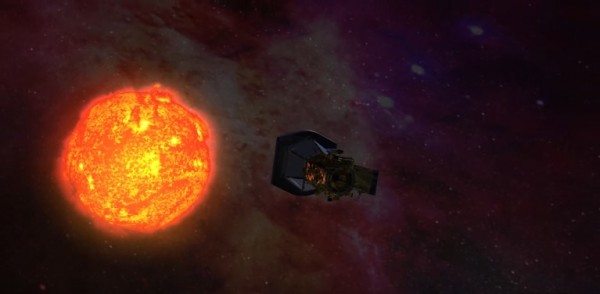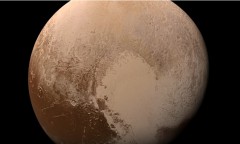By Prei Dy, | February 27, 2017

NASA's Solar Probe Plus mission in 2018 wants to unlock three mysteries of the sun. (YouTube)
NASA's plan to send a Solar Probe Plus mission to the sun aims to unlock three significant mysteries about the blazing star.
First, the mission aims to understand why the photosphere (the sun's surface), which is about 10,000 degrees Fahrenheit (5,500 degrees Celsius), is not as hot as its atmosphere (called corona), which sizzles to around 3.5 million Fahrenheit (2 million degrees Celsius).
Like Us on Facebook
"You'd think the farther away you get from a source, you'd get colder," Eric Christian, a NASA researcher at Goddard Space Flight Center, said. "Why the atmosphere is hotter than the surface is a big puzzle."
Experts believe that the Solar Probe mission could help explain why space-weather events happen and help prepare for potential threats. They also believe that the corona is where potentially destructive solar wind, flares, and mass "ejections" that can reach the Earth's atmosphere are produced.
The mission also wants to determine how solar wind obtain its speed. Christian said that the sun is blowing charged particles in all direction at million miles per hour, but scientists have not determined yet how it gets accelerated.
Solar wind has been known to exist for years. Early observers have noted how the comets' tails always pointed away from the sun, despite travelling in a different direction. According to Christian, such phenomenon suggests that something was coming off the sun faster than the comet's movement.
Lastly, researchers wants to discover why the sun is occasionally producing high-energy particles (solar energetic particles) that could cause danger to unprotected astronauts and space shuttles.
While scientists have always tried to solve these mysteries from Earth, the planet's 93 million miles distance from the sun hinders researchers' quest to find answers.
"[The distance makes] things get smeared out in a way that makes it hard to tell what's happening at the sun," he noted. And NASA's 2018 Sun Probe mission is to fly within 4 million miles of the sun.
Although it won't reach the actual surface, the upcoming mission still has to deal with several hurdles. The first challenge, unarguably, is the extreme heat. To address, NASA scientists created a 4.5-inch-thick carbon composite shield that could withstand a raging temperature of 2,500 Fahrenheit (1,370 degree Celsius).
The probe will also be equipped with thermal radiators, which are special heat tubes that permeates the heat shield to open space. This way, the heat does not go and affect heat-sensitive equipment. The tubes, as much as possible, aim to maintain a room temperature. A radiation-protection feature will also be installed to prevent the Solar Probe Plus from incurring any damage particularly in the electrical circuits and memory.
-
Use of Coronavirus Pandemic Drones Raises Privacy Concerns: Drones Spread Fear, Local Officials Say

-
Coronavirus Hampers The Delivery Of Lockheed Martin F-35 Stealth Fighters For 2020

-
Instagram Speeds Up Plans to Add Account Memorialization Feature Due to COVID-19 Deaths

-
NASA: Perseverance Plans to Bring 'Mars Rock' to Earth in 2031

-
600 Dead And 3,000 In The Hospital as Iranians Believed Drinking High-Concentrations of Alcohol Can Cure The Coronavirus

-
600 Dead And 3,000 In The Hospital as Iranians Believed Drinking High-Concentrations of Alcohol Can Cure The Coronavirus

-
COVID-19: Doctors, Nurses Use Virtual Reality to Learn New Skills in Treating Coronavirus Patients












